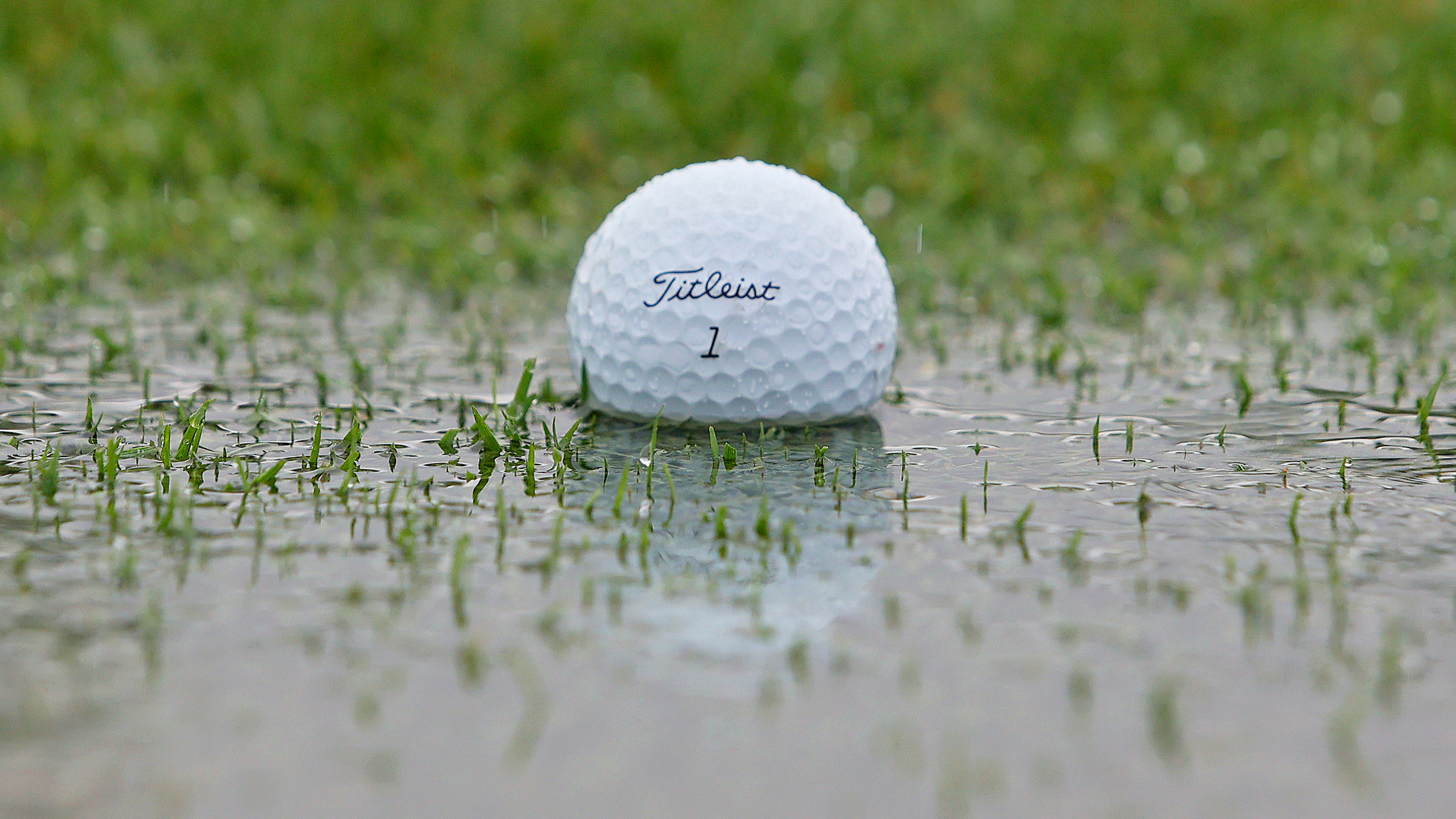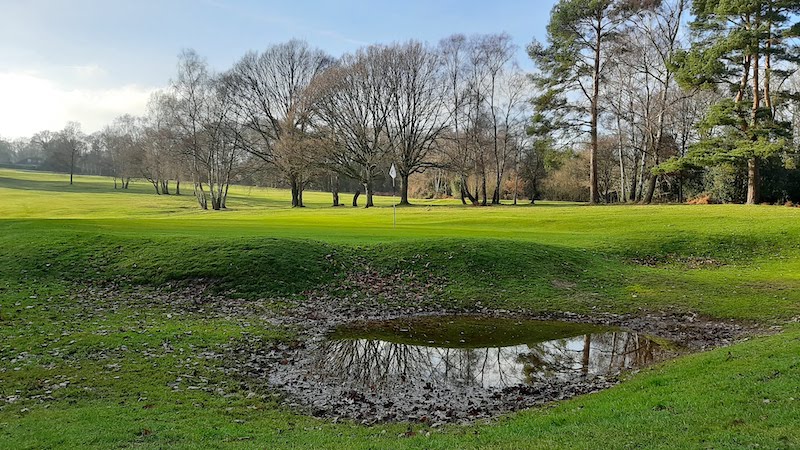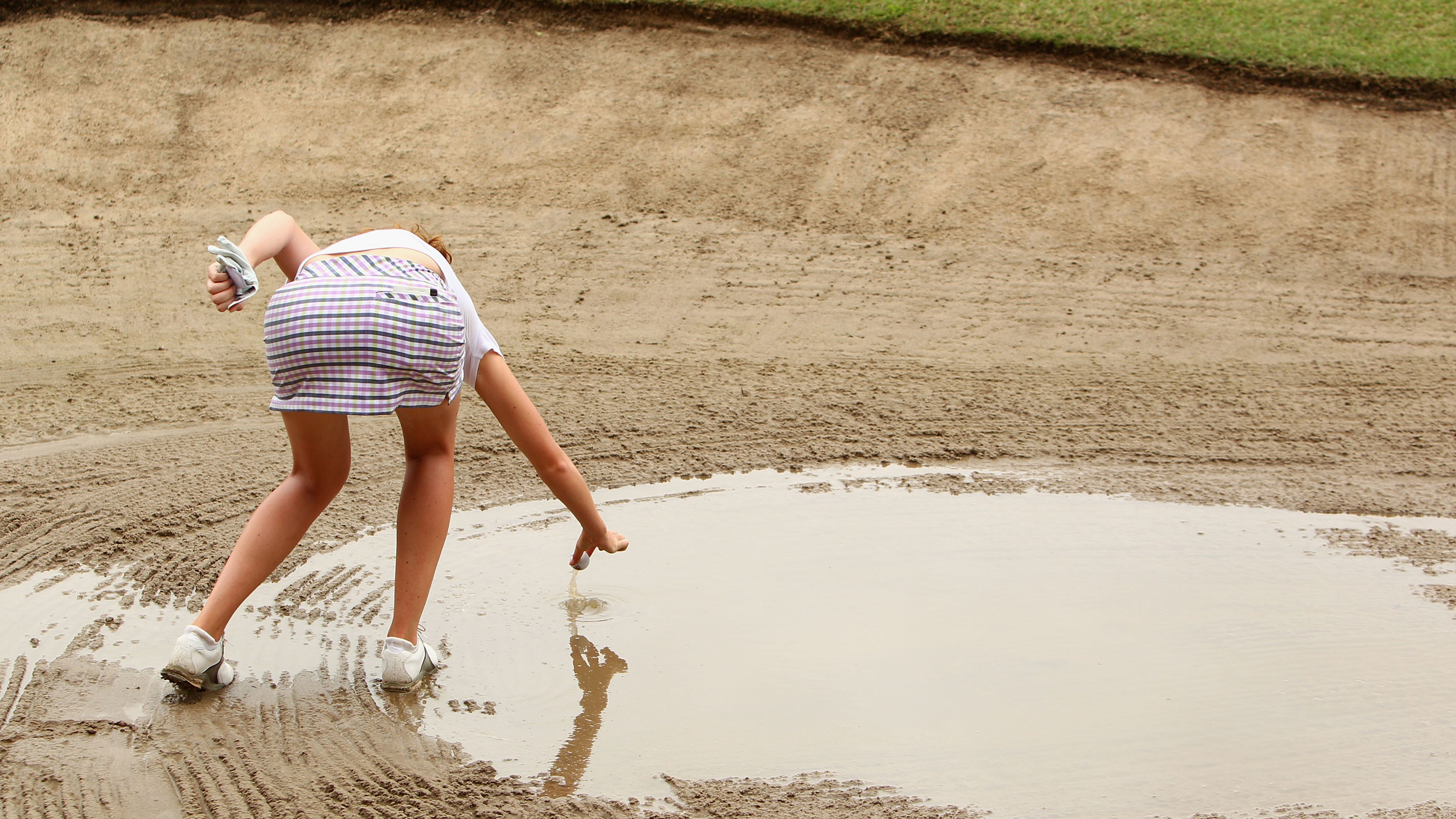What Is The Standing Water Rule In Golf?
Do you get a free lift out of standing water? When and how can you take relief from it?


In rainy weather, standing, casual or "Temporary Water" (as it's now referred to in The Rules) can be a factor on the golf course. If it’s possible, we might want to keep playing in wet conditions (particularly if it’s a competition.) The Rules allow for that to happen, until flooding becomes so bad that it’s impossible to complete a hole. If there are puddles on the “General Area” (which means anywhere on the golf course except greens, penalty areas and bunkers,) or on the greens, it’s possible to get relief and keep playing.
What is the Rule?
The Rule that applies with regards standing water on the golf course is Rule 16.1 – Abnormal Course Conditions (Including Immovable Obstructions.)
The Rule covers free relief that is allowed from interference from animal holes, ground under repair, immovable obstruction and – key for us here – “Temporary Water.”
Temporary Water is defined in The Rules as, “Any temporary accumulation of water on the surface of the ground (such as puddles from rain or irrigation or an overflow from a body of water) that: Is not in a penalty area, and can be seen before or after the player takes a stance (without pressing down excessively with their feet).”
When do you get a free drop?

You'd get a drop from that puddle
You get a free drop if your ball touches or is in or on the abnormal course condition – in this case the standing or temporary water.
You also get a free drop if the temporary water physically interferes with your stance or area of intended swing. Basically – if you’re standing in the water or if your club is going to hit the water in making a stroke.
On the putting green you are also entitled to a free drop if the temporary water is in your line of play. (Whether it’s on or off the green).
Subscribe to the Golf Monthly newsletter to stay up to date with all the latest tour news, equipment news, reviews, head-to-heads and buyer’s guides from our team of experienced experts.
The temporary water must be on the course (not out of bounds,) but not in a penalty area.
There’s no free drop when playing the ball as it lies is clearly unreasonable because of something from which the player is not allowed to take free relief (such as if you’re unable to make a stroke because the ball lies in a bush.)
You also wouldn’t get a free drop from temporary water if you choose a stance or direction of play that is clearly unreasonable in order to be affected by it.
How do you drop?

If the circumstances meet the criteria for relief from the temporary water, then you do so following Rule 14.3. – You establish the nearest point of complete relief – where you would neither be standing in the water, nor would your ball be in it, and you then have one-club length from there (Your Relief Area.)
Your Relief Area must be in the general area, no nearer the hole than the reference point – the nearest point of complete relief. And it must give you complete relief from the temporary water.
And what about bunkers?

You can claim free relief from water in a bunker but the key thing for this is, you must take your relief in that bunker in which your ball has come to rest. If there’s no nearest point of complete relief, you can use the point of maximum available relief as the reference point.
You can drop outside the bunker but only under penalty of one stroke.
And on the greens?
If your ball is on the putting green and there’s interference from temporary water, you can take relief by placing the original or a new ball on the spot of nearest complete relief. That nearest point of relief can either be on the green or in the general area – maybe the fringe or fairway. As in bunkers, if there’s no nearest point of complete relief, you can use the point of maximum available relief as the reference point.
As mentioned, if you’re on the green, you are entitled to relief if temporary water interferes with your line of play as well as if it interferes with where the ball lies or with your stance or swing.
What if I can’t get my original ball back out of the water?
If it’s known or it’s virtually certain your ball is in the temporary water but you can’t get to it, you can take relief using the estimated point where the ball crossed into the temporary water as the spot of the ball for the purpose of finding the nearest point of relief.

Fergus is Golf Monthly's resident expert on the history of the game and has written extensively on that subject. He has also worked with Golf Monthly to produce a podcast series. Called 18 Majors: The Golf History Show it offers new and in-depth perspectives on some of the most important moments in golf's long history. You can find all the details about it here.
He is a golf obsessive and 1-handicapper. Growing up in the North East of Scotland, golf runs through his veins and his passion for the sport was bolstered during his time at St Andrews university studying history. He went on to earn a post graduate diploma from the London School of Journalism. Fergus has worked for Golf Monthly since 2004 and has written two books on the game; "Great Golf Debates" together with Jezz Ellwood of Golf Monthly and the history section of "The Ultimate Golf Book" together with Neil Tappin , also of Golf Monthly.
Fergus once shanked a ball from just over Granny Clark's Wynd on the 18th of the Old Course that struck the St Andrews Golf Club and rebounded into the Valley of Sin, from where he saved par. Who says there's no golfing god?